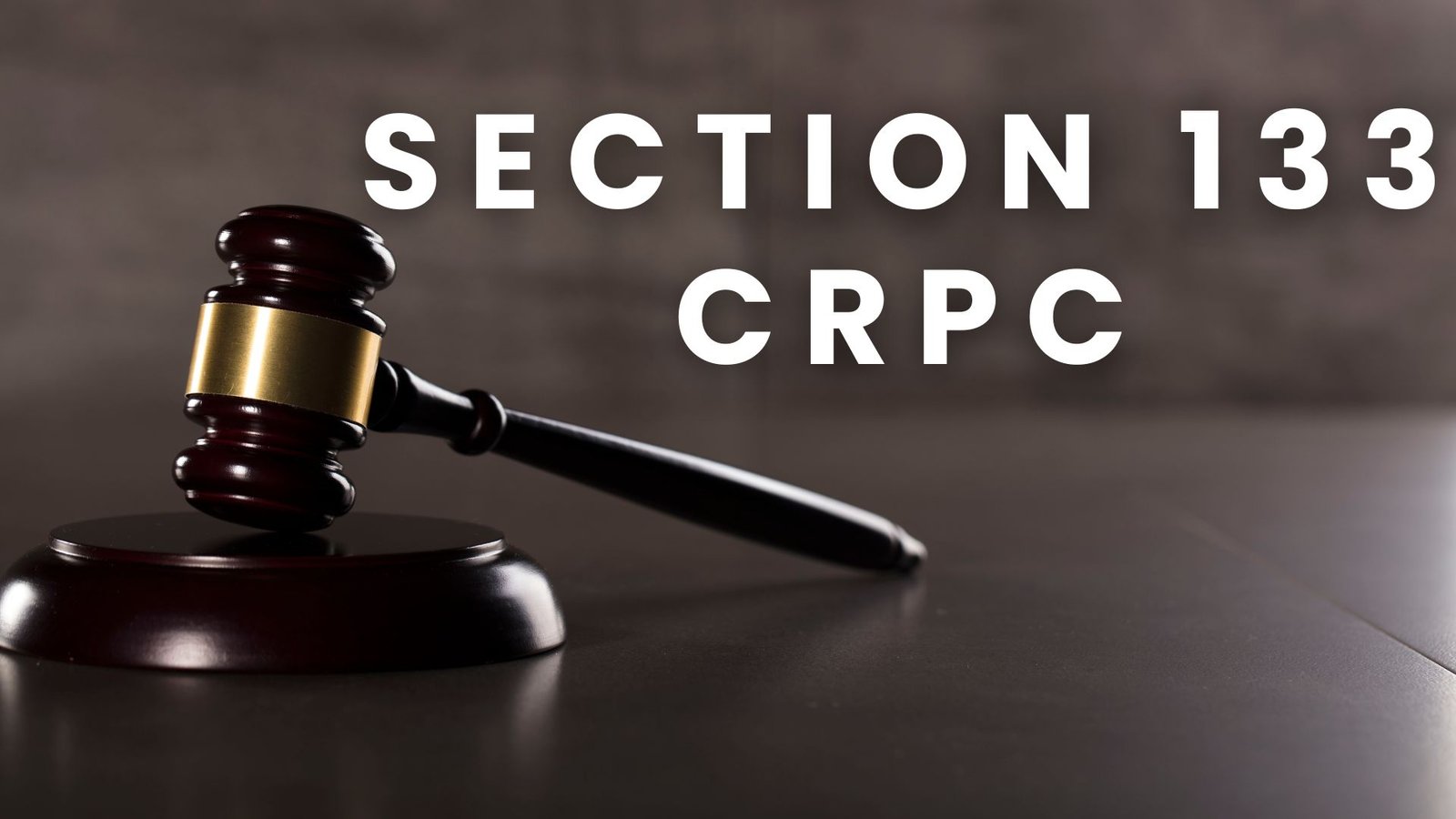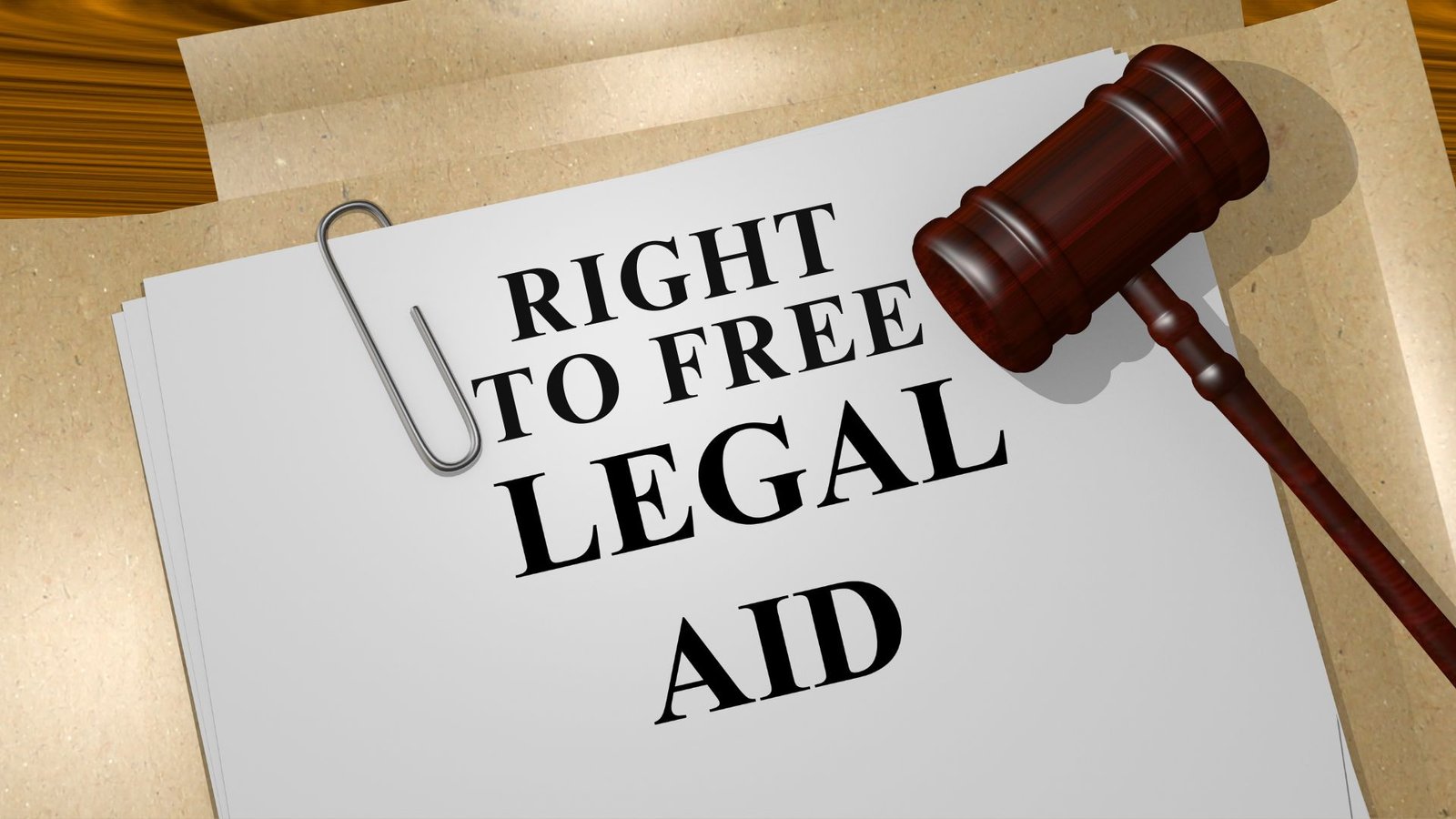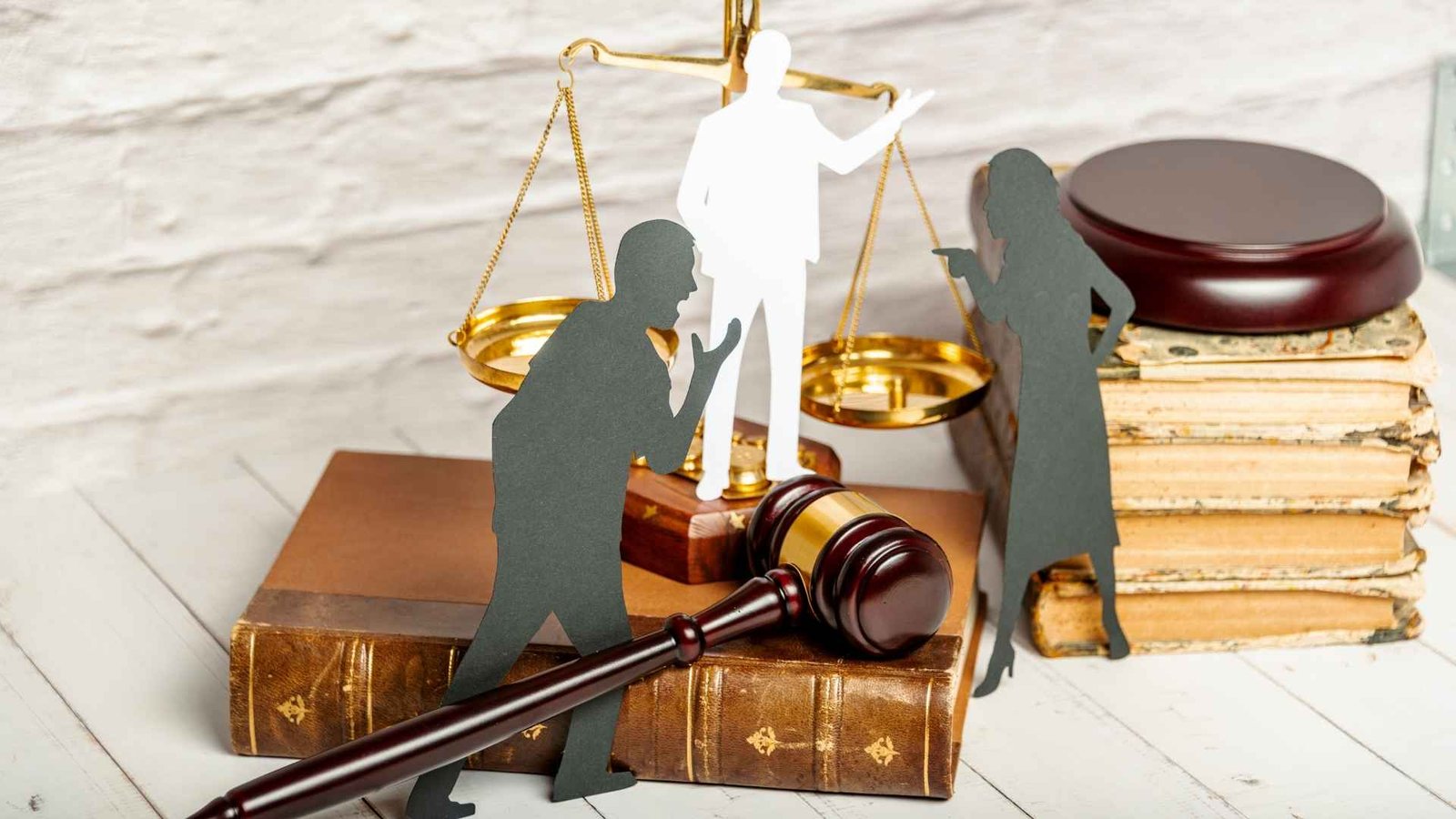On this page you will read detailed information about Power of Section 133 CrPC.
Introduction to Section 133 of the Criminal Procedure Code (CrPC)
Section 133 of the Criminal Procedure Code (CrPC) is a powerful legal provision that enables authorities to take swift action in order to maintain public welfare and preserve law and order. This section empowers authorities to address urgent situations that may pose a threat to the peace and safety of the community. Understanding the purpose and scope of Section 133 CrPC is crucial in comprehending its significance and the impact it has on society.
Understanding the purpose and scope of Section 133 CrPC
The primary objective of Section 133 CrPC is to empower authorities to take immediate action in situations where there is an imminent danger or nuisance that could disturb public tranquility. This provision allows authorities to intervene promptly and prevent the situation from escalating further. The scope of Section 133 CrPC is wide-ranging, covering a variety of situations such as encroachments, public nuisances, and potential health hazards.
One of the key aspects of Section 133 CrPC is its preventive nature. By granting authorities the power to take action before an actual harm or disturbance occurs, this provision plays a crucial role in maintaining peace and harmony within society. It allows authorities to address issues proactively, ensuring that potential threats are mitigated before they cause harm to individuals or the community as a whole.
Moreover, Section 133 CrPC also serves as a deterrent against future violations. By taking swift action and imposing penalties or remedies, authorities send a strong message to potential offenders, discouraging them from engaging in similar activities in the future. This preventive aspect of Section 133 CrPC contributes to the overall maintenance of law and order in society.
Key provisions and powers granted under Section 133 CrPC
Section 133 CrPC grants authorities several key provisions and powers to effectively address situations that require immediate action. Some of the notable provisions include the power to issue orders, the power to remove nuisances, and the power to impose penalties.
Firstly, authorities have the power to issue orders under Section 133 CrPC. These orders can be in the form of written notices or verbal directives, depending on the urgency and nature of the situation. The purpose of these orders is to communicate the action required to rectify the situation and ensure compliance with the law.
Secondly, Section 133 CrPC empowers authorities to remove nuisances. This includes the power to demolish illegal structures, clear encroachments, or take any other necessary action to address the nuisance. By granting authorities the power to remove such nuisances, Section 133 CrPC aims to restore public tranquility and prevent any harm or disturbance caused by these activities.
Lastly, Section 133 CrPC also provides authorities with the power to impose penalties or fines for non-compliance. This serves as an additional deterrent and reinforces the importance of adhering to the law. By imposing penalties, authorities can ensure that individuals or entities take the necessary steps to rectify the situation and prevent any future violations.
In the previous post, we had shared information about The Constitution of India: A Living Document, so read that post also.
Instances where Section 133 CrPC can be invoked
There are numerous instances where Section 133 CrPC can be invoked to address urgent situations that threaten public welfare. Some common scenarios include encroachments on public land, unauthorized constructions, public nuisances, and potential health hazards.
In the case of encroachments on public land, authorities can invoke Section 133 CrPC to take immediate action and remove the encroachments. This ensures that public spaces are preserved for their intended purpose and prevents any unauthorized occupation of public resources.
Similarly, unauthorized constructions that violate building regulations can be dealt with under Section 133 CrPC. Authorities can issue orders to halt the construction and take necessary steps to rectify the violation. This helps maintain the integrity of urban planning and ensures that buildings adhere to safety standards.
Public nuisances, such as loud and disruptive activities in residential areas or establishments, can also be addressed under Section 133 CrPC. Authorities can issue orders to cease the nuisance and take necessary action to restore peace and tranquility in the affected areas.
Additionally, potential health hazards, such as the presence of contaminated food or unhygienic conditions in public places, can be dealt with under Section 133 CrPC. Authorities can take immediate action to address these hazards and protect the health and well-being of the community.
Process and procedure to initiate action under Section 133 CrPC
The process to initiate action under Section 133 CrPC involves several steps to ensure a fair and just procedure. The first step is for the concerned authority to receive information or become aware of a situation that requires immediate action. This information can come from various sources, including public complaints or routine inspections conducted by the authorities.
Once the authority becomes aware of the situation, they must conduct a preliminary investigation to determine the validity and urgency of the matter. This investigation may involve site visits, gathering evidence, and consulting relevant experts or officials.
After completing the preliminary investigation, the authority can issue a show-cause notice to the person or entity responsible for the violation. This notice informs the recipient about the alleged violation and provides an opportunity to present their case and rectify the situation within a specified timeframe.
If the recipient fails to comply with the show-cause notice or does not rectify the violation within the given timeframe, the authority can proceed to take immediate action under Section 133 CrPC. This may involve issuing orders, removing nuisances, or imposing penalties, depending on the nature of the violation.
Throughout the process, it is essential for the authority to maintain transparency and provide an opportunity for the recipient to present their case. This ensures that the principles of natural justice are upheld and that the action taken under Section 133 CrPC is fair and proportionate.
Role and responsibilities of authorities in implementing Section 133 CrPC
Authorities play a crucial role in implementing Section 133 CrPC effectively and efficiently. It is their responsibility to ensure that the provision is used judiciously and in the best interests of public welfare. Some key responsibilities of authorities in implementing Section 133 CrPC include:
- Prompt action: Authorities must take immediate action upon becoming aware of a situation that requires intervention under Section 133 CrPC. This includes conducting investigations, issuing notices, and taking necessary steps to rectify the violation.
- Fair and just procedure: Authorities must adhere to the principles of natural justice throughout the process of implementing Section 133 CrPC. This involves providing an opportunity for the recipient to present their case, considering all relevant evidence, and ensuring that the action taken is fair and proportionate.
- Transparency and accountability: Authorities must maintain transparency in their actions and decisions related to Section 133 CrPC. This includes providing clear reasons for their actions, keeping records of the proceedings, and being accountable for the decisions made.
- Coordination and cooperation: Authorities often need to work in coordination with various departments and agencies to implement Section 133 CrPC effectively. This requires seamless cooperation and communication among different stakeholders to ensure a coordinated response to urgent situations.
By fulfilling these responsibilities, authorities can ensure that Section 133 CrPC is implemented in a manner that upholds the principles of justice and promotes public welfare.
Case studies showcasing the effectiveness of Section 133 CrPC
Several case studies highlight the effectiveness of Section 133 CrPC in addressing urgent situations and maintaining law and order. These case studies demonstrate the impact of this provision in promoting public welfare and ensuring the well-being of the community.
One notable case study is the demolition of illegal structures in a residential area. The local authorities invoked Section 133 CrPC to take immediate action against these unauthorized constructions, which were violating building regulations and posing a safety risk to residents. By demolishing these structures and imposing penalties on the violators, the authorities restored order and ensured the safety of the affected community.
Another case study involves the removal of encroachments on public land. The authorities utilized Section 133 CrPC to clear encroachments that were obstructing the construction of essential public infrastructure. By taking swift action and removing these encroachments, the authorities were able to proceed with the development plans, benefiting the entire community.
These case studies demonstrate the effectiveness of Section 133 CrPC in addressing urgent situations and maintaining law and order. They highlight the importance of this provision in promoting public welfare and ensuring the safety and well-being of the community.
Criticisms and challenges faced by Section 133 CrPC
While Section 133 CrPC is a powerful legal provision, it is not without its criticisms and challenges. Some common criticisms include concerns regarding the potential misuse of this provision, lack of clarity in defining certain terms, and the need for better safeguards to protect the rights of the accused.
One of the main criticisms of Section 133 CrPC is the potential misuse of its powers by authorities. There have been instances where this provision has been used to target certain individuals or communities based on personal biases or ulterior motives. To address this concern, it is crucial to have effective oversight mechanisms and accountability measures in place to prevent the misuse of this provision.
Another criticism revolves around the lack of clarity in defining certain terms used in Section 133 CrPC. For example, terms like “nuisance” and “imminent danger” may be subject to interpretation, leading to inconsistencies in applying this provision. The need for clear guidelines and standard operating procedures is essential to ensure uniformity and fairness in implementing Section 133 CrPC.
Additionally, there is a need for better safeguards to protect the rights of the accused during the implementation of Section 133 CrPC. While swift action is necessary in urgent situations, it is equally important to ensure that the rights of individuals or entities are not violated. Establishing clear procedures for the issuance of notices, providing an opportunity to present a defense, and ensuring a fair and just procedure are crucial to addressing this challenge.
Recent developments and amendments to Section 133 CrPC
In recent years, there have been several developments and amendments to Section 133 CrPC to address the criticisms and challenges faced by this provision. These developments aim to enhance the effectiveness and fairness of Section 133 CrPC in promoting public welfare and maintaining order.
One significant development is the introduction of clearer guidelines and standard operating procedures for the implementation of Section 133 CrPC. These guidelines provide authorities with a framework to follow, ensuring consistency and fairness in applying this provision. The guidelines also address concerns regarding the potential misuse of Section 133 CrPC by providing oversight mechanisms to prevent abuse of power.
Furthermore, recent amendments have emphasized the importance of protecting the rights of the accused during the implementation of Section 133 CrPC. These amendments ensure that individuals or entities are provided with an opportunity to present their case, have access to legal representation, and are afforded the principles of natural justice. This helps strike a balance between the need for swift action and the protection of individual rights.
The recent developments and amendments to Section 133 CrPC demonstrate the commitment to enhancing the effectiveness and fairness of this provision. By addressing the criticisms and challenges faced by Section 133 CrPC, these developments contribute to the overall promotion of public welfare and maintenance of order.
Conclusion: The significance and impact of Section 133 CrPC in promoting public welfare and maintaining order
In conclusion, Section 133 CrPC plays a vital role in empowering authorities to take swift action in urgent situations that threaten public welfare and disturb law and order. The purpose and scope of this provision enable authorities to address a wide range of situations, including encroachments, public nuisances, and potential health hazards.
The key provisions and powers granted under Section 133 CrPC equip authorities with the necessary tools to effectively address these situations. By invoking Section 133 CrPC, authorities can issue orders, remove nuisances, and impose penalties to maintain peace and harmony within society.
While Section 133 CrPC has faced criticisms and challenges, recent developments and amendments have sought to address these concerns. Clearer guidelines, protection of rights of the accused, and oversight mechanisms contribute to the fairness and effectiveness of Section 133 CrPC.
Overall, the significance and impact of Section 133 CrPC cannot be overstated. This provision plays a crucial role in promoting public welfare, maintaining order, and safeguarding the well-being of the community. It empowers authorities to take swift action and ensures that urgent situations are addressed promptly to prevent further harm or disturbance. By upholding the principles of justice and maintaining law and order, Section 133 CrPC contributes to the overall welfare and progress of society.
Disclaimer
The information and services on this website are not intended to and shall not be used as legal advice. You should consult a Legal Professional for any legal or solicited advice. While we have good faith and our own independent research to every information listed on the website and do our best to ensure that the data provided is accurate. However, we do not guarantee the information provided is accurate and make no representation or warranty of any kind, express or implied, regarding the accuracy, adequacy, validity, reliability, availability, or completeness of any information on the Site. UNDER NO CIRCUMSTANCES SHALL WE HAVE ANY LIABILITY TO YOU FOR ANY LOSS OR DAMAGE OF ANY KIND INCURRED AS A RESULT OR RELIANCE ON ANY INFORMATION PROVIDED ON THE SITE. YOUR USE OF THE SITE AND YOUR RELIANCE ON ANY INFORMATION ON THE SITE IS SOLELY AT YOUR OWN RISK. Comments on this website are the sole responsibility of their writers so the accuracy, completeness, veracity, honesty, factuality and politeness of comments are not guaranteed.
So friends, today we talked about Power of Section 133 CrPC, hope you liked our post.
If you liked the information about Power of Section 133 CrPC, then definitely share this article with your friends.
Knowing about laws can make you feel super smart ! If you find value in the content you may consider joining our not for profit Legal Community ! You can ask unlimited questions on WhatsApp and get answers. You can DM or send your name & number to 8208309918 on WhatsApp









